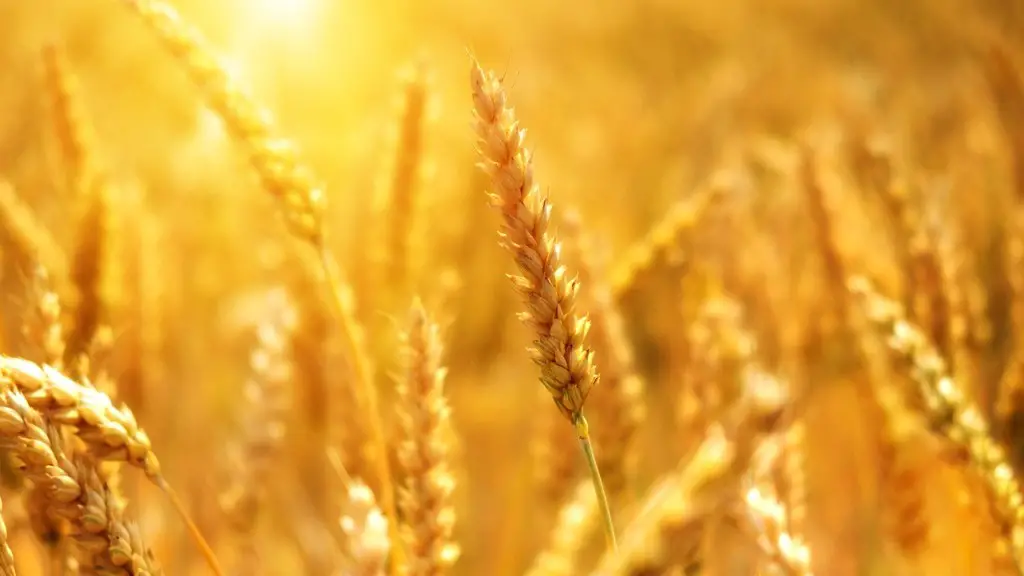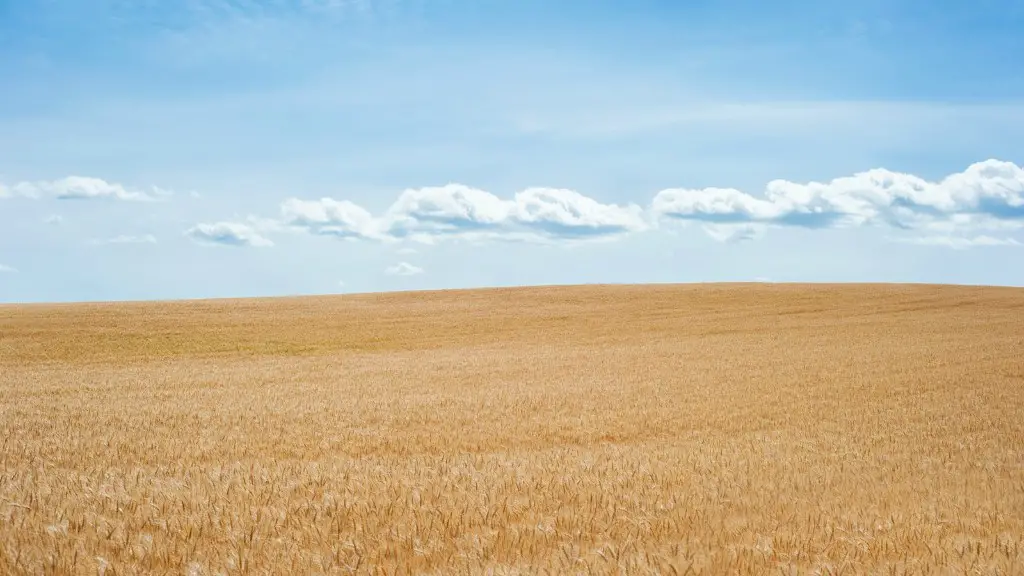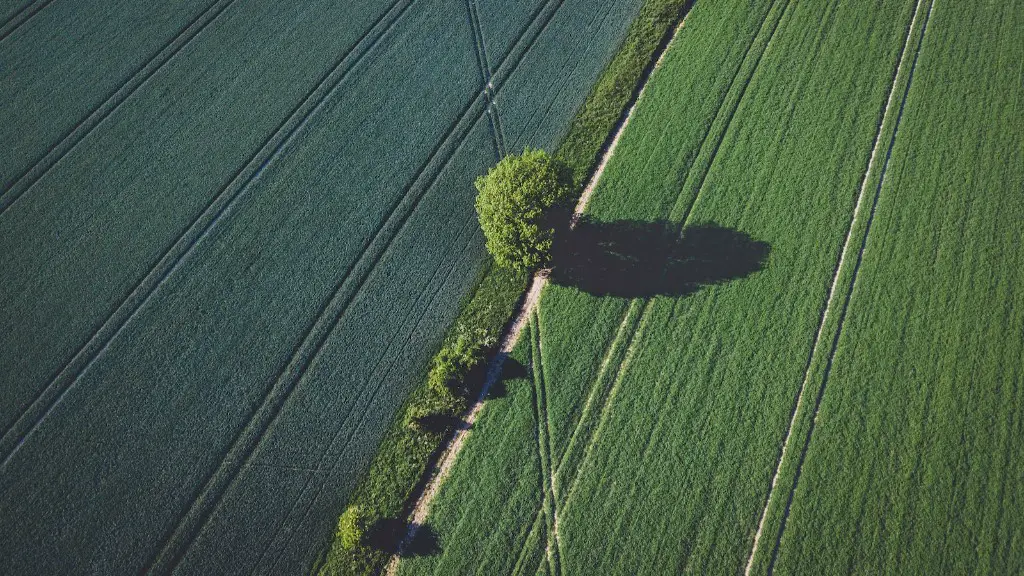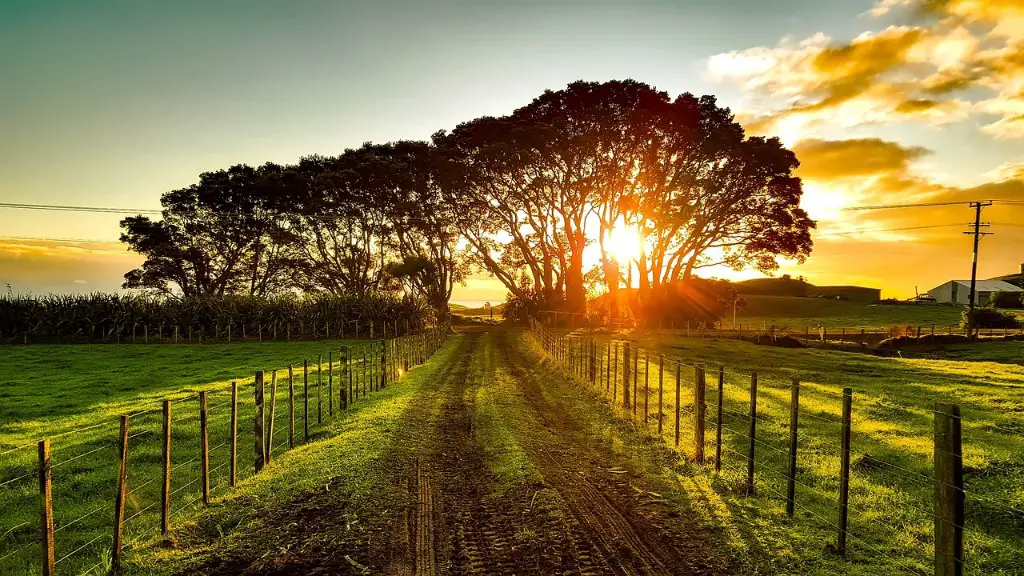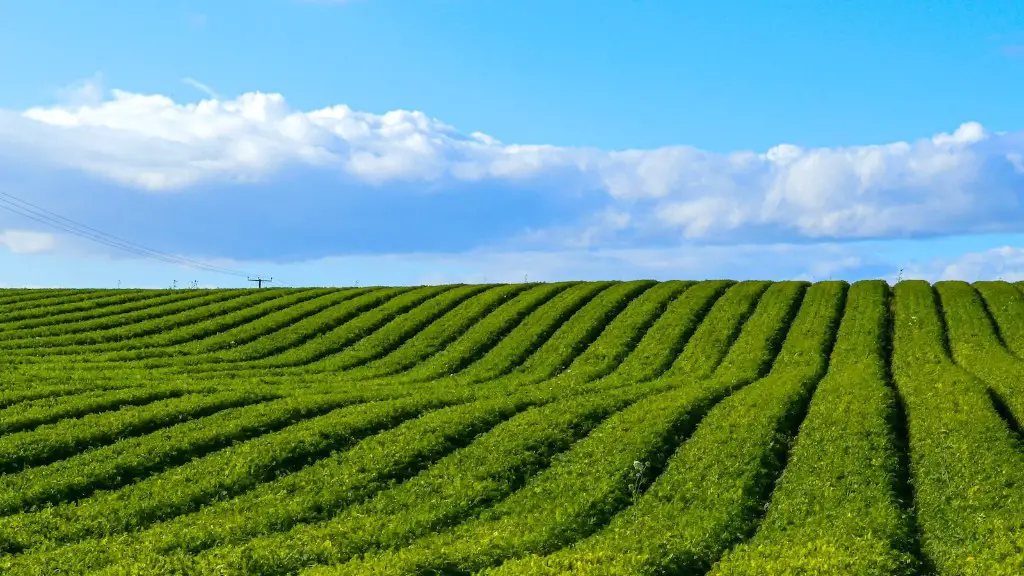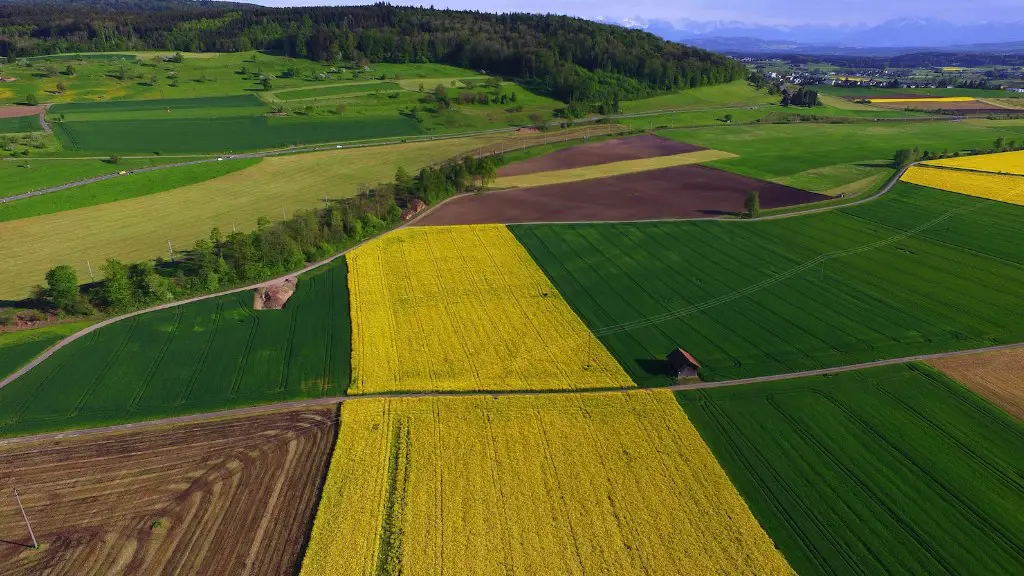The science and practice of agriculture includes a diverse set of activities such as the production of crops, the raising of livestock, the making of biopharmaceuticals, and the management of natural resources. Agricultural output in the United States was valued at more than $379 billion in 2016, accounting for approximately 1.1 percent of gross domestic product. The United States is a leading producer of corn, soybeans, wheat, and a number of other crops. The country is also a leading producer of livestock, including cattle, hogs, chicken, and turkey. In addition to producing food and fiber, agriculture plays a role in the production of a number of other products, including biofuels, pharmaceuticals, and construction materials.
Soil, water, sunlight, and limestone are the primary resources for agricultural production. Other inputs may include fuel, artificial irrigation, pesticides, and herbicides. Agricultural output includes food, feed, fiber, and biofuel.
What are the 7 sectors of agriculture?
The agricultural sector is a critical part of the economy, providing food and other products for both consumers and businesses. The sector is composed of many different sub-sectors, each of which plays a vital role in the overall industry. The food and beverage manufacturing sub-sector is responsible for producing the food and beverages that we consume on a daily basis. The food and beverage stores sub-sector provides a critical link between manufacturers and consumers, offering a wide variety of food and beverage products for sale. The food services and eating/drinking places sub-sector includes restaurants, caterers, and other businesses that prepare and serve food and beverages. The textiles, apparel, and leather products sub-sector provides the clothing and other materials that we use in our everyday lives. The forestry and fishing sub-sector is responsible for the production of timber and fish, two of the most important natural resources.
Each branch of agriculture serves a different purpose and thus contributes to the overall advancement of the agricultural industry. Livestock production deals with the raising of animals for meat, milk, or other products, while crop production focuses on the growing of plants for food, fuel, or other purposes. Agricultural economics examines the financial aspects of agriculture, such as market trends and prices, while agricultural engineering applies engineering principles to the design and operation of agricultural machinery and systems.
What are some examples of agriculture
Farms and ranches are a vital part of the American landscape. They provide us with food, fiber, and fuel, and support a wide variety of wildlife.
Farming and ranching are important economic activities, providing jobs for millions of Americans. The agriculture sector contributes more than $1 trillion to the economy each year, and the ranching industry adds another $200 billion.
Farms and ranches also provide critical habitat for a variety of plants and animals. More than 80% of the nation’s land is used for agriculture, and much of this land is managed for conservation purposes.
As we continue to face challenges like climate change and water scarcity, it is more important than ever to support our farmers and ranchers. They are the stewards of our land and our food supply, and they play a vital role in keeping our country healthy and prosperous.
Agriculture is the process of farming and raising livestock. This includes activities such as soil preparation, seed planting, crop harvesting, gardening, viticulture (growing grapes), apiculture (bee-raising), dairying, poultry, and ranching. Agriculture is an important part of the global economy and plays a significant role in the food security of many countries.
What are the 12 types of agriculture?
Farms come in all shapes and sizes and there are many different types of farming to choose from. Aquaculture farming is a type of farming that is done in water, such as in ponds or lakes. Cooperative farming is a type of farming where a group of farmers work together to farm a piece of land. Hay farming is a type of farming where hay is the main crop that is grown. Organic farming is a type of farming that uses natural methods to grow crops. Urban farming is a type of farming that is done in an urban area. Nomadic farming is a type of farming where farmers move around to different areas to farm. Sedentary farming is a type of farming where farmers stay in one place to farm. Intensive farming is a type of farming that uses a lot of land and resources to grow crops.
There are many branches of agriculture, each with its own focus and area of expertise. Agronomy is the study of soil and crops, horticulture is the study of plants, plant breeding and genetics is the study of how plants can be bred and improved, seed science is the study of seeds, crop-physiology is the study of how plants grow and develop, plant pathology is the study of plant diseases, plant protection is the study of how to protect plants from pests and diseases, and soil science is the study of soils.
What are the five fields of agriculture?
Agriculture is the art and science of producing plants and animals for human use. Agricultural businesses are those businesses that are involved in the production, processing, and marketing of agricultural products. Agricultural economics is the study of how people use resources to produce, distribute, and consume goods and services in the agricultural sector. Agricultural equipment is the machinery and tools used in farming. Agricultural management is the science and art of managing agricultural resources to produce goods and services. Agronomy is the science of producing plants for food, fuel, and fiber. Animal husbandry is the science and art of managing animals for human use.
The five sectors include subsistence or traditional agriculture, commercial agriculture, manufacturing goods production, capital goods production, and a government sector.
The subsistence or traditional agriculture sector is the most basic, and involves farmers producing crops and animals for their own consumption and to support their families. This sector is usually not profitable, and farmers may supplement their income with other activities such as fishing, hunting, and gathering.
The commercial agriculture sector is more advanced, and involves farmers producing crops and animals for sale. This sector is usually more profitable, as farmers can sell their surplus products.
The manufacturing goods production sector encompasses industries that produce finished products, such as clothing, furniture, and electronics. This sector is usually more capital-intensive than the other sectors, and requires a higher level of training and education for workers.
The capital goods production sector covers industries that produce equipment and machinery used in other sectors, such as construction, transportation, and energy. This sector is usually more technologically-advanced than the other sectors, and requires a higher level of investment.
The government sector is responsible for providing various public goods and services, such as education, healthcare, and defense. This sector is usually financed by taxation, and government spending typically
What are 10 branches of agriculture
There are 10 branches of agriculture that are essential to the field. They include: agronomy, genetics and plant breeding, soil science and soil chemistry, plant physiology, entomology, horticulture, agricultural extension, agricultural economics, agricultural engineering, animal husbandry, and plant pathology. Each of these branches plays a vital role in the science of agriculture and helps to make it the complex and productive industry it is today.
The three most widely cultivated agricultural commodities worldwide are cow milk, sugar cane, and corn. Cow milk is the most consumed beverage in the world, and sugar cane is the most widely cultivated crop. Corn is the most widely planted cereal crop and the third most consumed grain.
What is the difference between agriculture and farming?
Agriculture is one of the oldest and most important industries in the world. It is the science or function of farming, including cultivating the soil for growing crops and the rearing of animals to provide food, wool, and other products. Agriculture covers a vast area, including production, research and development, and farming.
Subsistence farming is the main form of agriculture in many parts of the world, where farmers grow enough food to feed themselves and their families, but do not produce surplus crops for sale. In contrast, commercial farming is geared towards producing large quantities of crops for sale on the open market. In the United States, commercial farming is overwhelmingly dominant, with high levels of mechanization.
What is not included in agriculture
Livestock products are those that come from animals, such as beef, pork, and lamb. The main livestock products are meat, milk, and eggs.
Intensive subsistence agriculture is a type of agriculture in which farmers grow crops on small plots of land and use simple tools and techniques to get the most out of their land. This type of agriculture is often used in areas where there is not enough land to support a large population.
What are the 8 major areas of agriculture?
Agronomy is the science and technology of producing and using plants for food, fuel, fiber, and land reclamation. Horticulture is the science and technology of producing and using plants for food, fuel, fiber, and land reclamation. Animal Production is the science and technology of producing and using animals for food, fuel, fiber, and land reclamation. Aquaculture is the science and technology of producing and using aquatic animals for food, fuel, fiber, and land reclamation. Agriculture Mechanics is the science and technology of producing and using machines for food, fuel, fiber, and land reclamation. Forestry and Natural Resources is the science and technology of producing and using forests and natural resources for food, fuel, fiber, and land reclamation. Soil Science is the science and technology of producing and using soils for food, fuel, fiber, and land reclamation. Agriscience and Biotechnology is the science and technology of producing and using plants and animals for food, fuel, fiber, and land reclamation.
The three main farming systems for crop production are irrigated, semi-mechanized and traditional. Each of these systems has its own advantages and disadvantages.
Irrigated farming systems require more investment in infrastructure, but they can provide a steady supply of water for crops. This can be important in areas with unreliable rainfall.
Semi-mechanized farming systems are less labor-intensive than traditional systems, but more labor-intensive than irrigated systems. They can be a good compromise between the two extremes.
Traditional farming systems are the most labor-intensive, but they can be adapted to a wide range of conditions and are usually the most affordable.
What are the seven basic agricultural practices
The 7 steps involved in agricultural practices are mentioned below:
1. Ploughing
2. Sowing
3. Adding nutrients
4. Irrigation
5. Protecting plants
6. Harvesting
7. Storage
Agriculture courses can be broadly divided into two categories: those that focus on the production of food and those that focus on the science of food. Production-focused courses deal with subjects like agricultural technology, food technology, dairy industry, and horticulture. These courses prepare students for careers in the food production industry. Science-focused courses, on the other hand, deal with subjects like food science, plant science, and forestry. These courses prepare students for careers in the food science industry.
Conclusion
In agriculture, there are many things that can be included. For example, there can be tillage of the soil, planting of seeds, irrigation,application of fertilizers, and crop rotation. All of these play a role in having a successful harvest.
The term ‘agriculture’ includes a wide range of activities and products. It can be broadly defined as the science, art and business of producing crops and livestock for human use. Agriculture includes everything from growing crops and raising animals, to processing and packaging food, to marketing and selling products.
